The International Modern Hospital Show 2006 is being held from July 12 to 14 in Tokyo (Tokyo Big Sight), where nearly 400 companies have gathered to showcase the latest in healthcare-related technology. The theme of the show is "Reliable Health, Medical Treatment, and Care -- Aiming for High Quality Service," a theme whose success evidently depends on high technology. Below are photos (via Impress Watch) and explanations of a few of the devices appearing at the show. Despite appearances, these fellows are here to help.
The first photo shows a patient simulator developed by IMI Corporation and Paramount Bed Co., Ltd., a system consisting of a monitor connected to a sensor-laden mannequin whose physiology changes realistically according to the treatment it receives. Great for training future medical professionals. Great for your haunted house, too.
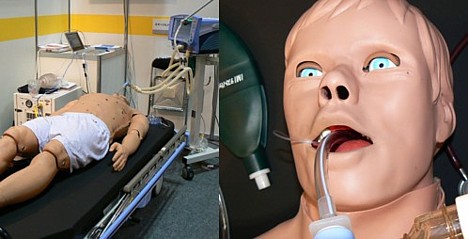
The next photo shows a transnasal endoscope developed by FUJIFILM Medical Co., Ltd. and Fujinon Toshiba ES Systems Co., Ltd. Surveys show that 90% of patients who have experienced endoscopy think it is more comfortable to enter through the nose (as opposed to through the mouth or anus). I hope the expression on this guy's face is no indication of his comfort level.
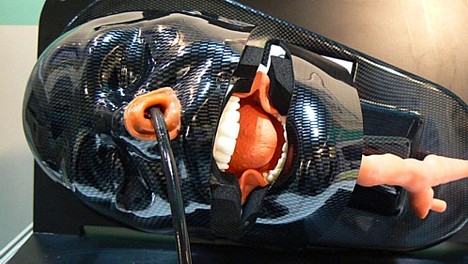
The next photo shows Muu Socia 3.0 (left), a cute cyclopean teardrop-shaped "communication support" robot developed by ATR and Systec Akazawa. The robot is designed to serve as a social mediator that livens up the communication between care giver and care recipient. Muu Socia has voice recognition, voice synthesis, speech processing and face recognition capabilities. And it starts bouncing around when something obstructs its view (watch the 5-second video (WMV)).
Pictured on the right is a home appliance control robot developed by RayTron Co., Ltd. Voice recognition capabilities allow patients to operate their home appliances by remote control. It looks sort of like an owl.
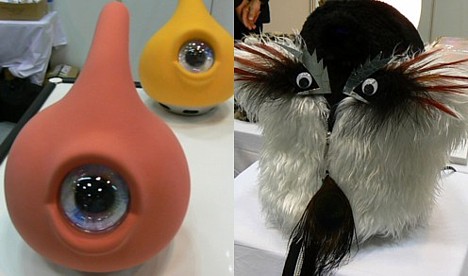
You can see more photos and read about the other technology on display at the link below.
[Source: Impress Watch]
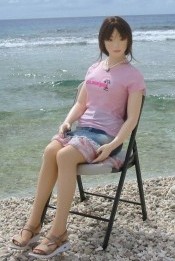 Cantomoko is a well-traveled sex doll. She travels mostly by car in Japan, though she is known to ride a bicycle at times. She enjoys the cherry blossoms in spring, lounges on the beach in summer, frolics in fields of cosmos in autumn, and goes snowboarding in winter. She sometimes attends parties with friends. She has been to the top of Mt. Fuji. She has traveled abroad, to Saipan. She has 38 galleries of travel photos to prove it.
Cantomoko is a well-traveled sex doll. She travels mostly by car in Japan, though she is known to ride a bicycle at times. She enjoys the cherry blossoms in spring, lounges on the beach in summer, frolics in fields of cosmos in autumn, and goes snowboarding in winter. She sometimes attends parties with friends. She has been to the top of Mt. Fuji. She has traveled abroad, to Saipan. She has 38 galleries of travel photos to prove it. 
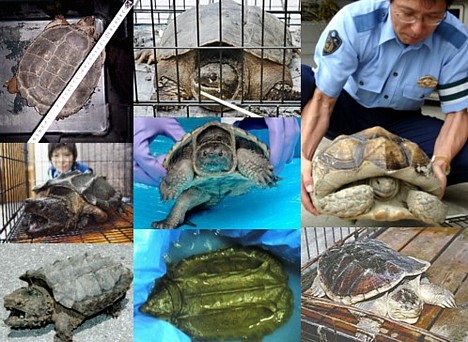
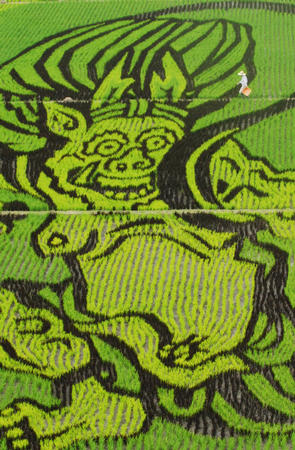 A giant image of Raijin, the God of Thunder, has appeared in a rice field in the village of
A giant image of Raijin, the God of Thunder, has appeared in a rice field in the village of 


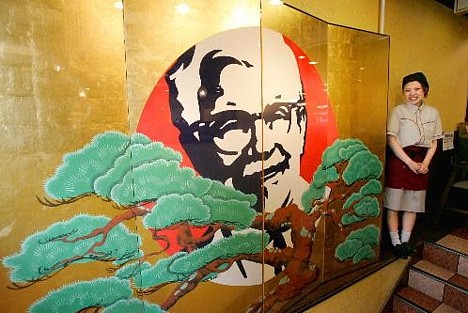
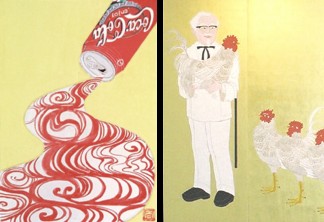 KFC's Shinkyogoku branch is displaying three of Yamamoto's works, including a gilded folding screen depicting Colonel Sanders holding an Ito Jakuchu-style chicken and a hanging scroll featuring a can of Coca-Cola.
KFC's Shinkyogoku branch is displaying three of Yamamoto's works, including a gilded folding screen depicting Colonel Sanders holding an Ito Jakuchu-style chicken and a hanging scroll featuring a can of Coca-Cola. Researchers have developed the next best thing for would-be
Researchers have developed the next best thing for would-be 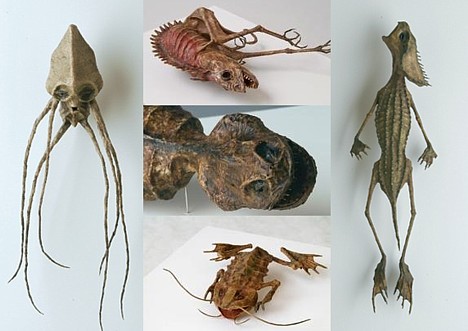
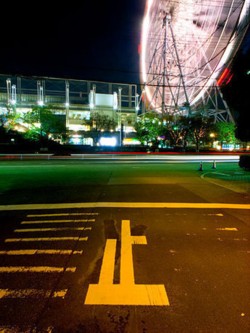 As writer and photographer Chizon-san (from
As writer and photographer Chizon-san (from 